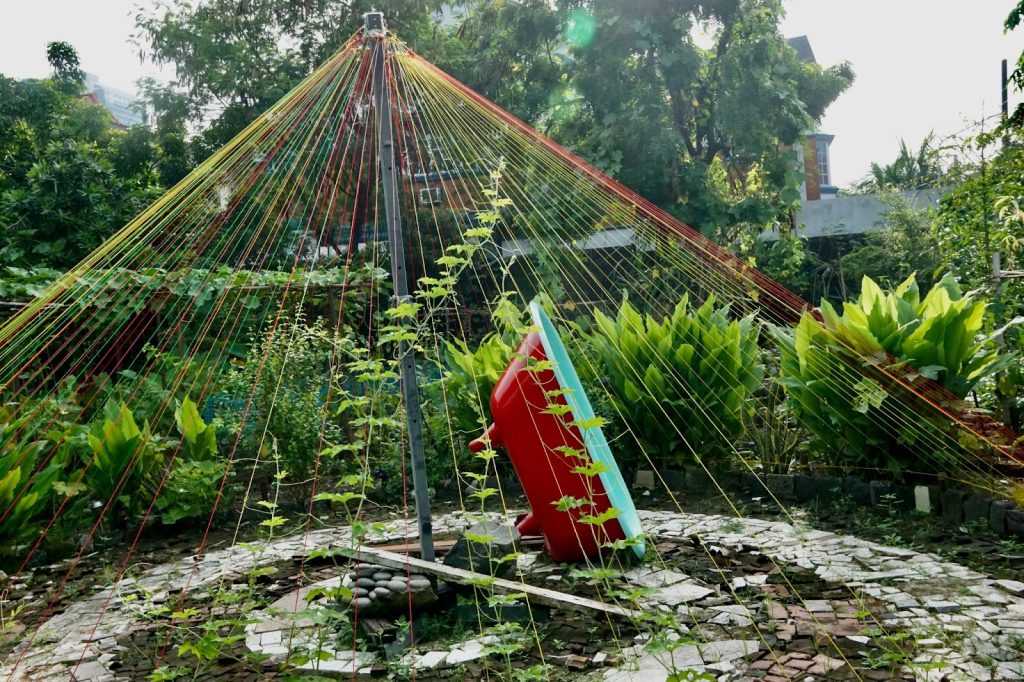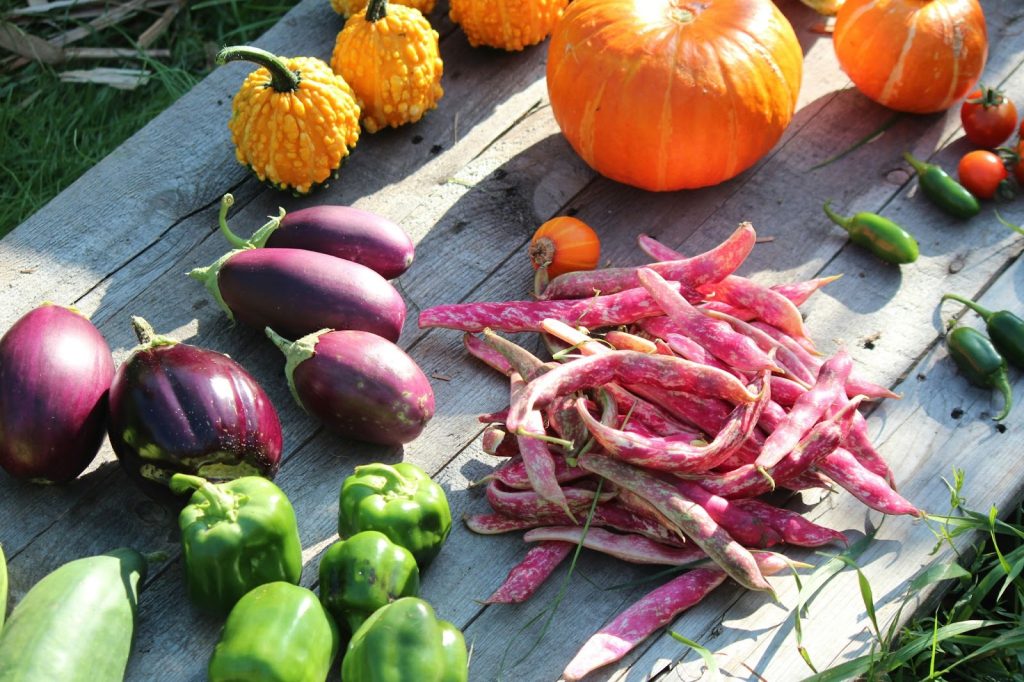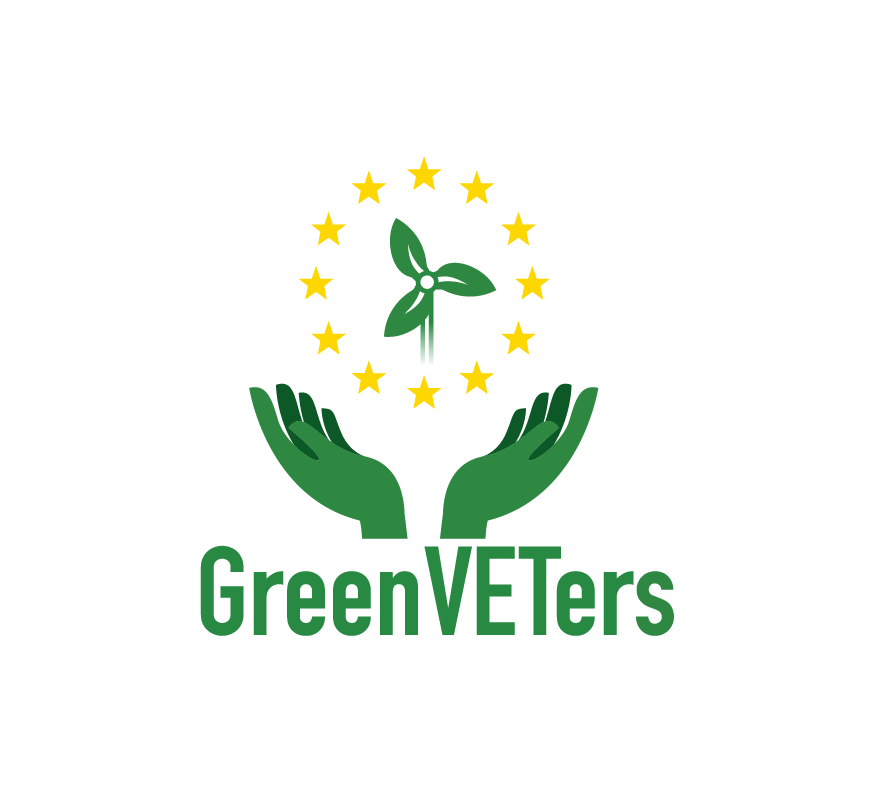Worksheet for Lesson 8:
Permaculture and Ecological agriculture
Learning Objectives:
2. Students learn about the ways in which permaculture promotes the efficient use of resources and the conservation of biodiversity
3. Students learn about soil characteristics, the benefits of permaculture on soil (reduction of soil pollution)
4. Students learn the role of weather stations in permaculture
Permaculture
Permaculture is a combination of permanent agriculture and permanent culture. It is an innovative framework for creating sustainable ways of living and a practical method of developing ecologically harmonious, efficient, and productive systems that anyone can use anywhere. The essence of permaculture is the design of an ecologically sound way of living – in our households, gardens, communities, and businesses. It is created by cooperating with nature and caring for the earth and its people.

Permaculture offers a ray of hope – a way forward. It offers everyone the chance to be part of the transition to a more eco-friendly, ethical and sustainable future. It integrates land, resources, people and the environment through mutually beneficial synergies – imitating the no-waste, closed-loop systems seen in diverse natural systems.
Permaculture studies and applies holistic solutions applicable in rural and urban contexts at any scale. It is a multidisciplinary toolbox including agriculture, water harvesting and hydrology, energy, natural building, forestry, waste management, animal systems, aquaculture, appropriate technology, economics and community development.
The philosophy behind permaculture is one of working with, rather than against, nature; of protracted and thoughtful observation rather than protracted and thoughtless action; of looking at systems in all their functions, rather than asking only one yield of them; and allowing systems to demonstrate their own evolutions.
Mollison, B. (1988)

Permaculture consists of three basic ethics:
• Earth care – rebuild natural capital; the young plant represents organic growth, a key ingredient in sustaining life on Earth.
• People care – look after self, family, and community; two people together, represent the need for companionship and collaborative efforts to affect change.
• Fair share – set limits and redistribute surplus; the pie and a slice of it represents the taking of what we need and sharing what we do not whilst recognizing that there are limits to how much we can give and how much we can take.
How permaculture promotes the efficient use of resources and the conservation of biodiversity
In permaculture, nature does all the work, but for a permaculture garden to be sustainable, self-sufficient and properly balanced, it’s important to favour biodiversity. The fifth permaculture design principle is ‘Using Biological Resources’.
This design principle is concerned with using biological resources to do work or conserve energy, rather than using non-renewable energy sources such as fossil fuel resources. Wherever we can use a plant or animal to perform a certain function in our designs, this is our preferred approach. For instance, livestock can be used to keep the grass short rather than use a lawnmower, or plants may be used that attract beneficial predatory insects to control pests rather than use toxic chemical pesticides. It is critical to plan the use of biological resources early in the design process. It is needed to consider which biological resources will be utilized on the site, and what will be the strategy to manage them. These biological resources will form the very basis of the energy recycling systems, and as a result, determine how sustainable the design will be.

Biodiversity is a human perception which relates to the evaluation of all life on the planet. The concept is tightly linked to permaculture design through the conscious attempt to increase functional diversity in species assemblies and in the emphasis placed on the construction of energy-efficient ecosystems. Biodiversity, together with the fostering of life and soil fertility, is a key aspect of permaculture. Diversity ensures balance, even more so when it’s happening within a permaculture garden. Other aspects of biodiversity are not as valued in permaculture design. For permaculturists, indigenous ecosystem integrity and species richness are second to the functional relationships between species in a consciously designed system.
Food production systems designed from a permaculture perspective aim to maximize
their similarity to nature and ecosystems, thereby providing an increase in biodiversity and ecosystem services, such as nutrient cycling, soil building, carbon sequestration, water infiltration into soil and uptake by plants (which can have a positive impact on erosion and flooding during major weather events) and reduction in the urban heat island effect. Since permaculture does not employ chemical fertilizers or pesticides, it can provide benefits to pollinators and water quality as well.
Soil characteristics, the benefits of permaculture on soil
Increasing awareness about the environmental limits of modern agriculture has led to the need for a transition toward a more resilient and biodiverse agriculture model. In this regard, micro- or mini-farms, inspired by the permaculture model and bio- intensive micro-gardening, could potentially play a key role in this transition.
Permaculture offers positive solutions to properly manage the biogeochemical cycles, eliminate toxic chemicals, and create an abundance of food while regenerating land. Application of artificial fertilizer and high nitrogen manures can create nitrous oxide and carbon dioxide. Permaculture has a variety of approaches to mediate, resolve, or avoid these unsustainable practices. Specifically, permaculture advocates for completely organic agriculture which avoids artificial fertilizers. When you farm organically, you don’t feed the plants, you feed the soil. Permaculture methods like composting, ‘chop and drop,’ no-till farming, and more efficient fertilizer application, like foliar sprays, increase beneficial soil organisms. These methods reduce or eliminate nitrogen or carbon escaping from soils.

Regarding soil management, permaculture designs seek to ‘slow, spread, and sink’ water. This reduces stormwater runoff, recharges the aquifer, and seeks to eliminate soil erosion, thereby reducing the amount of carbon and nitrogen which leave the soil. Furthermore, soil organic matter plays a fundamental role in soil, functioning by maintaining fertility through nutrient recycling, as well as increasing nutrient retention.
Some of the useful permaculture techniques and their benefits on soil are:
• Greywater – it may look “dirty”, but it is a safe and even beneficial source of irrigation water in a yard. If greywater is released into rivers, lakes, or estuaries, its nutrients become pollutants, but to plants, they are valuable fertilizer.
• Hügelkultur – a practice of burying wood to increase soil water retention due to the porous structure of wood acting as a sponge when decomposing underground.During the rainy season, sufficient buried wood can absorb enough water to sustain crops through the dry season.
• Composting – an organic fertiliser produced from plant and animal waste by partial aerobic decomposition by microorganisms through the composting process.
Compost can be added to soil to help plants grow. Compost enriches the soil with humus, increases soil fertility, and increases its water and air capacity. It makes the soil airy and plump and improves plant growth and development.
• Agroforestry – a land use management system in which trees or shrubs are grown
around or among crops or pastureland. This intentional combination of agriculture and forestry has multiple benefits, such as greatly enhanced yields from staple food crops, enhanced farmer livelihoods from income generation, increased biodiversity, improved soil structure and health, reduced erosion, and carbon sequestration.
Examples/Case studies from real organic/permaculture farms
Case Study 1
Source: https://veganpermaculture.org/blog/2019/12/13/starting-a-market-garden- interview-with-jo-dave/
Case Study 2
Source: https://krainabugu.pl/zielarski-sukces-po-podlasku/
Case Study 3
Source: https://www.treehugger.com/making-living-permaculture-design-practice-5097391
Case Study 4
Source: https://ec.europa.eu/programmes/erasmus-plus/project-result- content/ce6ef4b2-0e84-42bb-8cac-7f8ec683b9fd/IO2-CaseStudies-EN.pdf
Role of weather stations in Permaculture
Because weather conditions influence yield crops, such instruments become vital for agricultural purposes. However, professional weather stations are costly and their complexity requires specific expertise in order to work with them, which is why having a smaller, private weather station can be of great help for agriculture and permaculture purposes. For instance, with relatively small costs, one can create a portable, personal weather station and equip it capable of measuring the wind direction, wind speed and rainfall.

Another great feature most new home weather stations include is a forecast. It can be very accurate for the next several hours to a couple of days, making it much easier to decide whether you should pick early in the day or later in the day. Another great feature of a personal weather station is the capability to push notifications to your mobile phone. The benefit here is that you can set them so that you know immediately when temperatures approach the freezing point or winds reach damaging speeds. This would allow you to cover plants to avoid frost damage and bring potted plants into the garage if too windy.
REFERENCES
• Permacultureprinciples.com. (n.d.).,https://permacultureprinciples.com/
• Deep Green Permaculture (n.d.). Permaculture Design Principle 5 – Using BiologicalResources, https://deepgreenpermaculture.com/permaculture/permaculture-design-principles/5-using-biological-resources/
• Green Communities Guide (n.d.). Permaculture, https://greencommunitiesguide.ca/guide/nbs-implementation-overviews/permaculture
• Mumm, J. (1998). Paper on Biodiversity and Permaculture, http://www.ibiblio.org/london/permaculture/mailarchives/permaculture-UNC/msg01153.html
• Nature Garden (n.d.). Biodiversity in permaculture for a self-sustaining garden, https://www.nature-and-garden.com/gardening/permaculture-biodiversity-self-sustaining.html
• Auburn University. (2020). Food & Climate Change: A Permaculture Perspective, https://sustain.auburn.edu/food-climate-change-a-permaculture-perspective/
• Grey Water Action. (n.d.)., https://greywateraction.org/greywater-reuse/
• Tombeur, F., Sohy, V., Chenu, C., Colinet, G., Cornelis, J. (2018). Effects of PermaculturePractices on Soil Physicochemical Properties and Organic Matter Distribution inAggregates: A Case Study of the Bec-Hellouin Farm (France), https://www.frontiersin.org/articles/10.3389/fenvs.2018.00116/full
• Wikipedia. (n.d.). Agroforestry, https://en.wikipedia.org/wiki/Agroforestry
• Wikipedia. (n.d.). Kompost, https://pl.wikipedia.org/wiki/Kompost
• Wikipedia. (n.d.). Permaculture, https://en.wikipedia.org/wiki/Permaculture
• Auburn University. (2020). Food & Climate Change: A Permaculture Perspective, https://sustain.auburn.edu/food-climate-change-a-permaculture-perspective/
• Grey Water Action. (n.d.)., https://greywateraction.org/greywater-reuse/
• Tombeur, F., Sohy, V., Chenu, C., Colinet, G., Cornelis, J. (2018). Effects of PermaculturePractices on Soil Physicochemical Properties and Organic Matter Distribution inAggregates: A Case Study of the Bec-Hellouin Farm (France), https://www.frontiersin.org/articles/10.3389/fenvs.2018.00116/full
• Wikipedia. (n.d.). Agroforestry, https://en.wikipedia.org/wiki/Agroforestry
• Wikipedia. (n.d.). Kompost, https://pl.wikipedia.org/wiki/Kompost
• Wikipedia. (n.d.). Permaculture, https://en.wikipedia.org/wiki/Permaculture
• Auburn University. (2020). Food & Climate Change: A Permaculture Perspective, https://sustain.auburn.edu/food-climate-change-a-permaculture-perspective/
• Grey Water Action. (n.d.)., https://greywateraction.org/greywater-reuse/
• Tombeur, F., Sohy, V., Chenu, C., Colinet, G., Cornelis, J. (2018). Effects of PermaculturePractices on Soil Physicochemical Properties and Organic Matter Distribution inAggregates: A Case Study of the Bec-Hellouin Farm (France), https://www.frontiersin.org/articles/10.3389/fenvs.2018.00116/full
• Wikipedia. (n.d.). Agroforestry, https://en.wikipedia.org/wiki/Agroforestry
• Wikipedia. (n.d.). Kompost, https://pl.wikipedia.org/wiki/Kompost
• Wikipedia. (n.d.). Permaculture, https://en.wikipedia.org/wiki/Permaculture
It's Quiz Time!
It’s quiz time!
Here’s a fun quiz that you could use to test your understanding of the key concepts covered in this lesson:
Quiz Summary
0 of 4 Questions completed
Questions:
Information
You have already completed the quiz before. Hence you can not start it again.
Quiz is loading…
You must sign in or sign up to start the quiz.
You must first complete the following:
Results
Results
0 of 4 Questions answered correctly
Your time:
Time has elapsed
You have reached 0 of 0 point(s), (0)
Earned Point(s): 0 of 0, (0)
0 Essay(s) Pending (Possible Point(s): 0)
Categories
- Not categorized 0%
- 1
- 2
- 3
- 4
- Current
- Review
- Answered
- Correct
- Incorrect
-
Question 1 of 4
1. Question
Which of the following examples permaculture does NOT include?
CorrectIncorrect -
Question 2 of 4
2. Question
The three ethics of permaculture are „Earth care, people care, animal care”:
CorrectIncorrect -
Question 3 of 4
3. Question
Using Biological Resources” is the fifth
CorrectIncorrect -
Question 4 of 4
4. Question
Which of the following are examples of permaculture techniques:
CorrectIncorrect





